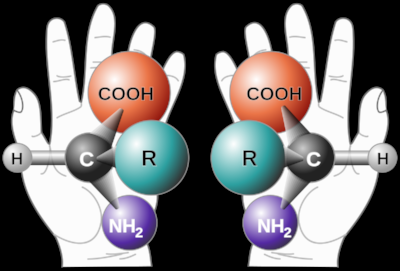בבא מציעא ל ,ב
דתני רב יוסף והודעת להם זה בית חייהם את הדרך זו גמילות חסדים (אשר) ילכו זה ביקור חולים בה זו קבורה ואת המעשה זה הדין אשר יעשון זו לפנים משורת הדין
Rav Yosef taught: The verse states (Ex. 18:20):
"You shall make known to them" -this refers to their livelihood
"The way" - this refers to good deeds
"That they may walk" - this refers to visiting the sick...
According to Rav Yosef, Moses was instructed to let the people know that they must pursue a livelihood, perform kind acts and visit the sick. Let's remind ourselves of the importance of that last one, with a repost from Nedarim 39. There, we read the following:
נדרים לט, ב - מ, א
תניא ביקור חולים אין לה שיעור ... אמר אביי: אפי' גדול אצל קטן רבא אמר אפי' מאה פעמים ביום אמר רבי אחא בר חנינא כל המבקר חולה נוטל אחד מששים בצערו
יצא ר' עקיבא ודרש: כל מי שאין מבקר חולים כאילו שופך דמים. כי אתא רב דימי אמר: כל המבקר את החולה גורם לו שיחיה וכל שאינו מבקר את החולה גורם לו שימות
Visiting the sick is a mitzvah that has no limit... Abaye said that even an important person must visit a lesser person who is ill...Rava said: [you must visit a sick person] even one hundred times a day...Rabbi Acha bar China said: "Whoever visits a sick person takes away one-sixtieth of his suffering...
Rabbi Akiva expounded and said: "Whoever does not visit the sick, it is as if he sheds blood." When Rav Dimi came [from Israel to Babylon] he said: "Whoever visits the sick causes the person to live, and whoever does not visit the sick, causes the person to die." (Nedarim 39b-40a)
Some time ago I visited the famous Grady Memorial Hospital in Atlanta, and was privileged to be given a tour of their new Neurocritical Care Unit, part of the Marcus Stroke and Neuroscience Center (and thank you, Bernie "Home Depot" Marcus). While the unit has all the fancy equipment you'd expect, what impressed me the most was a feature I had not seen in any other intensive care unit (ICU): every patient room has an adjoining suite where a family member can eat, sleep, shower and wait (and there is a lot of waiting in ICUs). There are no visiting hours; the family member literally lives in the ICU with their loved one. My tour guide explained that the unit sees the presence of visitors as a way of offering the best care to the patient. It is a wonderful approach to the care of the sick - but it wasn't always like that.
A HISTORY OF VISITING THE SICK - IN HOSPITALS
Visiting times in hospitals still vary greatly, and many have an open door policy. But not too long ago, you might only be able to visit a patient in a hospital for a couple of hours each week. In the 1870s, Doncaster Royal Infirmary in Britain limited visiting to three afternoons a week - which was a more generous policy than that of the Royal Berkshire Hospital, which allowed only one 15 minute visits twice a week. In a survey of over 400 British hospitals conducted in 1988, over a quarter of those which replied allowed visiting for no more than two hours a day. Perhaps these restrictive policies were in response to some visitors who abused the generosity of Britain's glorious National Health Service.
““[A more open visiting policy] proved to be a disaster, primarily because of abuse of the system by visitors. Many would arrive promptly at 8 am and stay all day. They would bring sandwiches and flasks . . . and camp out by their relative’s bed . . . Others would eat patients’ food, [and] ask for extra cups of tea...there was even a threat of violence from a visitor asked to leave temporarily...”
HELP PATIENTS GET WELL SOONER - BY VISITING THEM
In 2006 an Italian group reported the results of a study on the effects of hospital visitors on patient outcomes in its small intensive care unit. The ICU changed its visiting policy from a restricted one (one visitor twice a day for thirty minutes) to an unrestricted one every two months. After two years of this alternating policy, the authors compared the outcomes of their 226 patients. Despite significantly higher environmental microbial contamination during the unrestricted visiting periods, septic complications were similar. But the risk of cardiocirculatory complications was twice as high in the restricted visiting periods, which were also associated with a (non-significantly) higher mortality rate. The unrestricted group was associated with a greater reduction in anxiety score and a significantly lower increase in thyroid stimulating hormone from admission to discharge. The authors concluded that "liberalizing the visiting hours seems to be more protective because it is associated with a reduction in severe cardiovascular complications."
Incidence, with Odds Ratio and 95% Confidence Intervals, of septic and major cardiovascular complications in patients enrolled during the restricted (RVP) and unrestricted visiting periods (UVP) adjusted for age, gender, and time of enrollment. RR indicates relative risk; UT, urinary tract; pul., pulmonary; and CV compl., cardiovascular complication. From Fumagalli et al. Reduced Cardiocirculatory Complications With Unrestrictive Visiting Policy in an Intensive Care Unit Results From a Pilot, Randomized Trial. Circulation. 2006;113:946-952.
Writing in The Journal of the American Medical Association in 2004, Donald Berwick and Meeta Kotogal called for a change in the policy of restricted visiting hours in intensive care units. They noted three areas which are often of concern to ICU staff when considering the question of visiting hours. They also noted that although these concerns seem reasonable, the scientific literature tells "quite a different story."
Physiologic Stress for the Patient: "The concern that the patient should be left alone to rest incorrectly assumes that family presence at the bedside causes stress. The empirical literature suggests that the presence of family and friends tends to reassure and soothe the patient, providing sensory organization in an overstimulated environment and familiarity in unfamiliar surroundings. Visits of family and friends do not usually increase patients’ stress levels, as measured by blood pressure, heart rate, and intracranial pressure, but may in fact lower them. Nursing visits, on the other hand, often increase stress."
Barriers to the Provision of Care: "The second concern is that the unrestricted presence of loved ones at the bedside will make it more difficult for nurses and physicians to do their jobs and may interfere with the delivery of care. The evidence suggests, however, that the family more often serves as a helpful support structure, increasing opportunities for patient and family education, and facilitating communication between the patient and clinicians."
Exhaustion of Family and Friends: "The third concern is that constant visiting with the patient may prove exhausting for family and friends who fail to recognize the need to pace themselves. While that does sometimes happen, it is also true that open visiting hours help alleviate the anxiety of family and friends, allowing them to spend time with the patient when they want and to feel more secure and relaxed during the time they are not with the patient. One study found that open visitation had a beneficial effect on 88% of families and decreased anxiety in 65% of families."
A review of visitation policies in ICUs produced by the American College of Critical Care Medicine Task Force went one step further and found "no evidence that pets that are clean and properly immunized should be restricted from the ICU environment." So don't forget to bring the dog next time you visit a family member or friend in the ICU (or anywhere else for that matter).
“...the preponderance of the literature supports greater flexibility in ICU visitation policies. Descriptive studies of the physiologic effects of visiting on mental status, intracranial pressure, heart rate, and ectopy demonstrated no physiologic rationale for restricting visiting. In fact, in seven of 24 patients with neurologic injuries, family visits produced a significant positive effect, measured by decrease in intracranial pressure.”
HOW TO VISIT A FRIEND WHO'S SICK - THEN, AND NOW
Most of the evidence about the benefits of visiting the sick that we've been discussing have centered on the ICU- because that's where most of the research has been done. But for most of the time, an ill friend will not be in the ICU, or even in the hospital. Instead they will be at home, and so that is where the visit will occur. Sadly, the ability to be a friend to a friend who is sick does not come easy to all of us. Here's what Letty Pogrebin noted, in her recent book How to be a Friend to a Friend Who's Sick:
It's not uncommon for people to freeze or panic in the company of misery, botch gestures that were meant to ease, attempt to problem-solve when we have no idea what we're talking about, say the wrong thing, talk too much, fidget in the sick room, sit too close to the patient or stand too far away. Some of us don't visit our sick friends at all...
The Talmud sensed that visitors need some guidelines as to how to behave, and so in the daf that we will learn tomorrow, Rav Shisha suggested the following rule: "One should not visit a sick person in the first three hours of the day or in the last three hours of the day." In addition, the Talmud notes that "one who goes to visit the sick should not sit on the bed nor on a bench or a chair, but instead should wrap himself up in his cloak and sit on the ground, because the divine presence rests above the bed of a sick person." While we may no-longer follow this advice, the suggestion that we take our visits to the sick seriously is one that we should heed. Let's close with some more advice, updated for the modern era, from Pogrebin's 2013 handbook (p86-86):
Ask the patient to be honest with you and all their friends.
Be honest with yourself about your attitude toward the visit.
Think through your role in the visit.
Don't visit if you can't abide silence.
Be prepared to respond without flinching to whatever scene or circumstances greet you during your visit.
Be sensitive to your friend's losses.
Talk honestly with your children about the demands illness makes on friendship and how important it is to visit people who want company.
“What is the reward given for visiting the sick in this world? “God will guard him and restore him to life and he will be fortunate on earth, and You will not give him over to the desire of his foes.” [Ps 41:3.]:
”God will guard him” - from the evil inclination.
”And restore him to life” - from his suffering.
”And he will be fortunate on earth”- in that everyone will take pride in him.
”And You will not give him over to the desire of his foes”- for he will have good friends... ”















